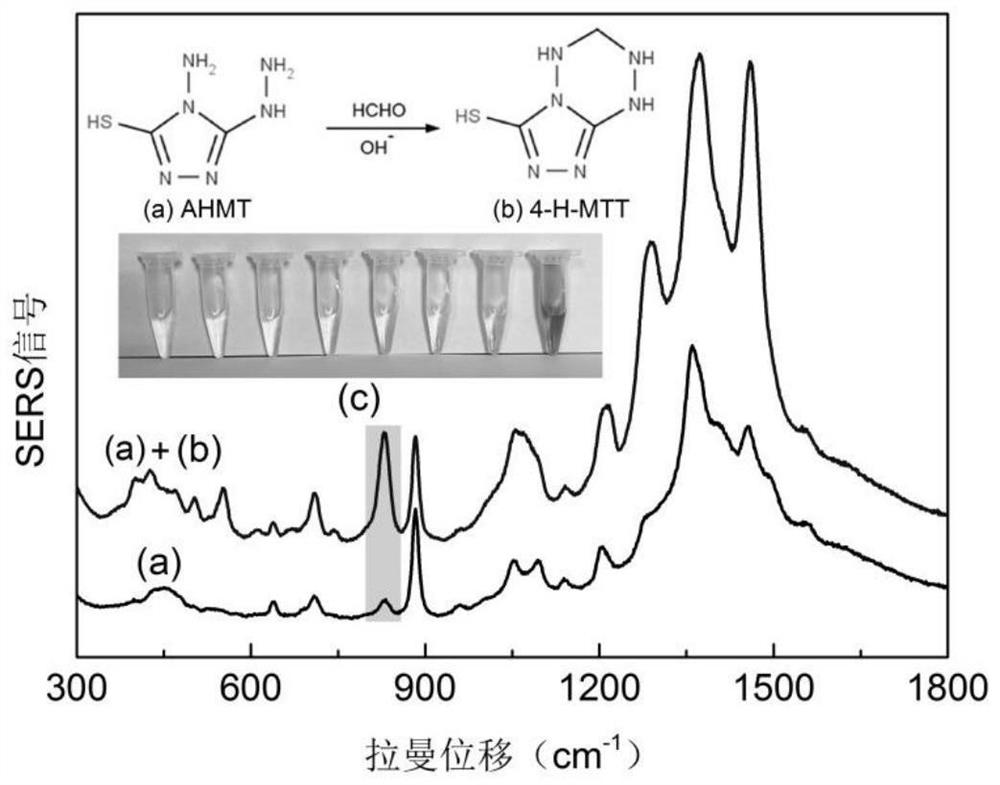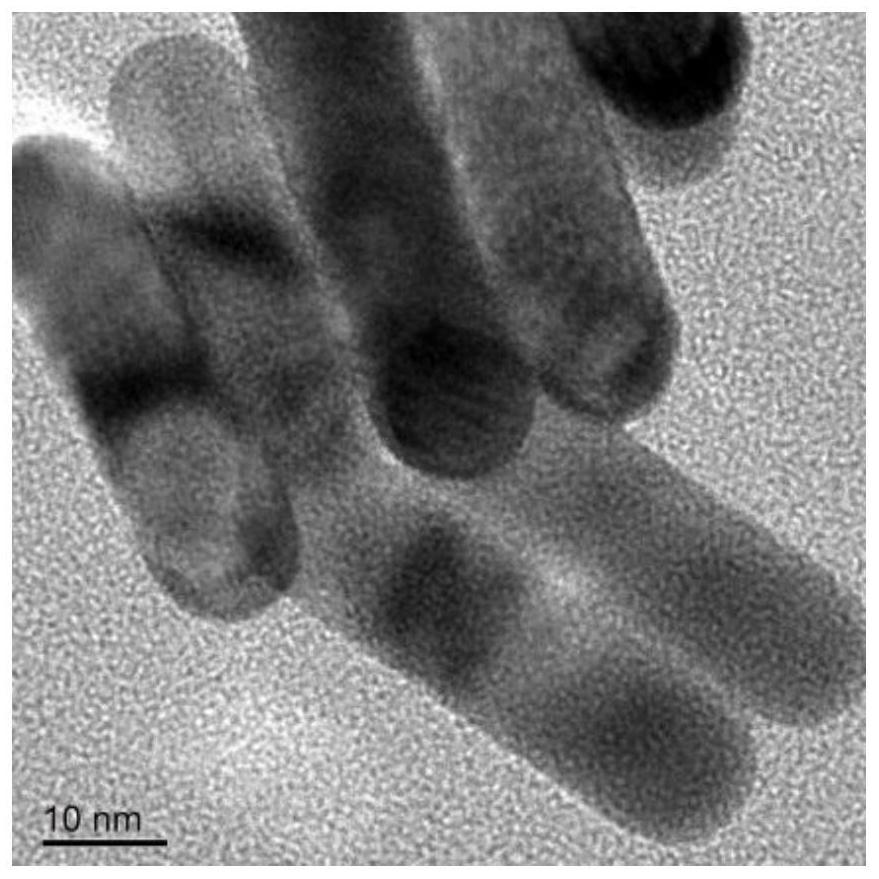Method for detecting formaldehyde in food based on surface enhanced Raman spectroscopy of gold nanorod substrate
A surface-enhanced Raman and gold nanorod technology, applied in the field of chemical detection, can solve the problems of complex composition, long time consumption, influence of detection results, etc., and achieve the effect of good Raman activity
- Summary
- Abstract
- Description
- Claims
- Application Information
AI Technical Summary
Problems solved by technology
Method used
Image
Examples
preparation example Construction
[0039] The method for preparing the gold nanorod dispersion is not particularly limited in the present invention. It is only necessary to adopt a method for preparing the gold nanorod dispersion well-known to those skilled in the art so that the prepared gold nanorod dispersion meets the above parameters. In the present invention, the synthesis method of the gold nanorod dispersion preferably includes a seed method, a template method or an electrochemical method, more preferably a seed method. In the present invention, the morphology of the gold nanorod dispersion synthesized by the seed growth method is controllable and relatively uniform, which is more conducive to improving the Raman enhancement effect.
[0040] In the present invention, the method for synthesizing the gold nanorod dispersion liquid by the seed method preferably includes the following steps:
[0041](a) tetrachloroauric acid is mixed with cetyltrimethylammonium bromide and sodium borohydride to obtain a mix...
Embodiment 1
[0083] (1) A gold nanorod dispersion is provided, the particle diameter of the gold nanorods is 50nm, and the concentration is 4.5×10 -5 mol / L.
[0084] The preparation method of gold nanorod dispersion liquid is as follows:
[0085] 5mL 0.5mmol / L tetrachloroauric acid (HAuCl 4 ) into 5 mL of 0.2M cetyltrimethylammonium bromide (CTAB), and stirred for 30 minutes. Then add 0.6mL 0.01mol / L sodium borohydride (NaBH 4 ) to continue stirring for 2 minutes. With HAuCl 4 and CTAB began to mix, and the solution color gradually changed from light yellow to yellow. When NaBH 4 When added to the mixed solution, the color of the solution changed from yellow to brown. The seed solution was incubated at room temperature for 30 minutes before use.
[0086] The growth solution consisted of 180 mg CTAB and 0.22 mg 5-bromosalicylic acid (5-BrSA) dissolved in 5 mL of water, and then 240 μL of 4 mM silver nitrate (AgNO 3 ) preparation, after adding 5mL 1mmol / L HAuCl 4 Previously, the mi...
Embodiment 2
[0094] Repeat the method of Example 1, the difference from Example 1 is that in step (2), "take 50 μL of the solution from the centrifuge tube and add it to 500 μL of the gold nanorod dispersion provided in step (1) and shake well".
[0095] In the Raman spectrum of the solution to be tested at 830cm- 1 The peak height I of the absorption peak at 样 , obtain the concentration C of formaldehyde in the sample solution to be tested according to the working curve that step (2) draws 样 , and then according to the formula ω=C 样 ×V 样 ÷m×100%, calculate the content ω of formaldehyde in the food, and measure 5 sets of parallel data of the solution to be tested. The calculation results are shown in Table 1.
PUM
| Property | Measurement | Unit |
|---|---|---|
| Particle size | aaaaa | aaaaa |
| Concentration | aaaaa | aaaaa |
| Concentration | aaaaa | aaaaa |
Abstract
Description
Claims
Application Information
 Login to View More
Login to View More - R&D
- Intellectual Property
- Life Sciences
- Materials
- Tech Scout
- Unparalleled Data Quality
- Higher Quality Content
- 60% Fewer Hallucinations
Browse by: Latest US Patents, China's latest patents, Technical Efficacy Thesaurus, Application Domain, Technology Topic, Popular Technical Reports.
© 2025 PatSnap. All rights reserved.Legal|Privacy policy|Modern Slavery Act Transparency Statement|Sitemap|About US| Contact US: help@patsnap.com



